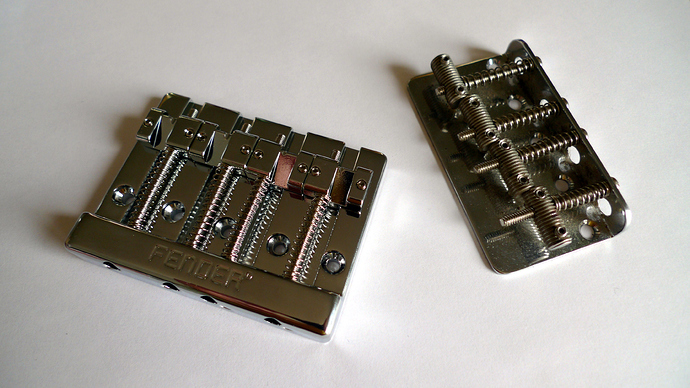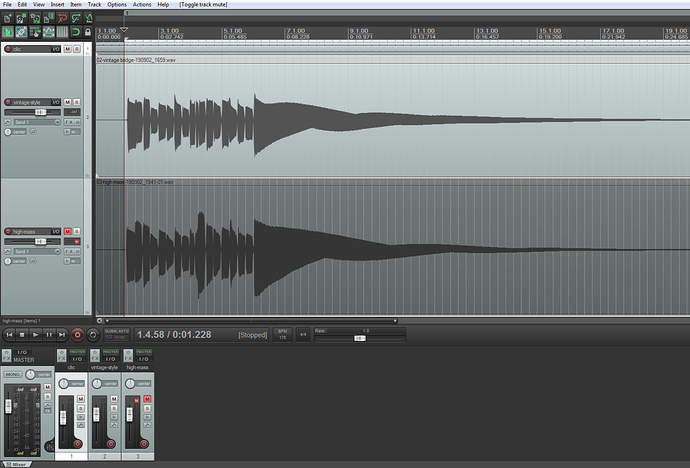Hey all ! It’s me again, straight from the bridge-thing rabbit hole. I’ve decided I had to do some experiments by myself, so I picked up a Fender Hi-Mass brass bridge for my 2004 MIA Fender Precision. I chose this model because it’s not too expensive, it’s a Fender so I won’t have compatibility issues, and it has good reviews on the internets. Looked like an obvious choice to me.
The saddles and the bridge itself are both solid chrome-plated brass. Measured at 250 grams, this is a massive piece of metal : it’s 3 times heavier than the stock vintage-style bridge.
here is a picture to show the difference in size (and overall look) between the two bridges :
I find this hi-mass bridge a bit bulky. Even if the finish is pretty good, I prefer the look of the vintage bridge, but, hey, that’s not the most important.
So, I recorded the same short bass line with the stock bridge and with the new hi-mass one, after a proper setup. Everything other than the bridge is exactly the same. The lines have been recorded with my Line6 UX1, Ampeg B15 modeling with a flat EQ, and of course no effect or compression or anything.
Stock vintage-style bridge :
Hi-Mass bridge :
So, obviously there is a difference, but it’s not a revolution as I’ve read sometimes. Here is my review on different points :
- The more obvious thing is a better overall clarity. The harmonics are more present and more “detached”, which is something I like.
- The instrument feels more living (/raw/wild), it vibrates more, which again is a thing I like.
- Probably a consequence of the two previous points, the instrument is more sensitive to dynamics. Again, I like that.
- I’ve read everywhere that a heavy bridge gives a longer sustain, and this point is not a simple one. I see clearly on the DAW that the sustain is not longer, but very strangely it feels longer. Don’t know how to explain that …
Here is a screenshot, the top track is the one with the vintage bridge and the bottom track with the hi-mass :
We clearly see that there is no noticeable difference in sustain, but we also see that the resonnance frequency has changed : take a look at the damping wave on the last note.
EDIT : I was talking about the full length of the note, but I wonder if what we mostly hear/feel could be the first volume drop (first phase of the damping wave) ? if yes, then the effective sustain is indeed longer and it would explain why I feel a difference.
So to sum up, there is a difference with this hi-mass bridge and it goes to the direction I like, so I don’t regret. But the difference is relatively small : I’m pretty sure a volume pot value change would have more effect for exemple.
Also the gain in clarity, dynamics and vibration is not desired by everybody. For exemple for a bass player who would play old-school music, or seek for a vintage-style sound, this bridge swap would be counterproductive.
here is my review at this point !

